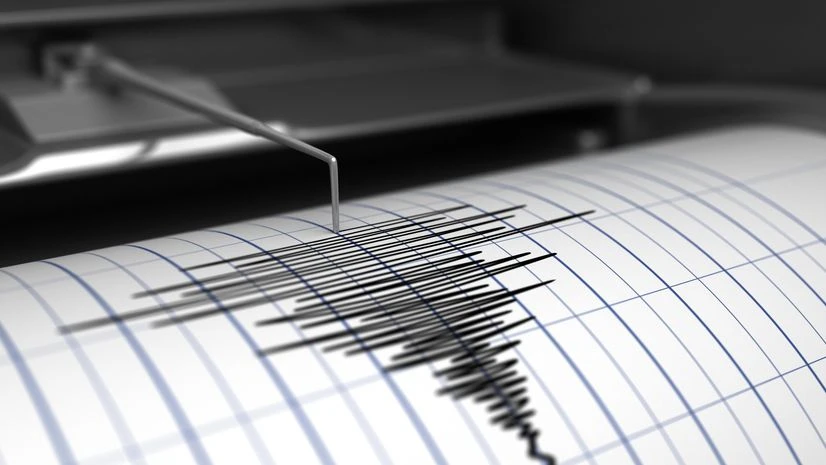A 4.8 magnitude earthquake has recently struck La Union in the Philippines, sending tremors that were distinctly felt as far as Baguio City. Residents reported feeling the ground shake and minor movements in their homes, sparking concern and prompting local authorities to monitor the situation closely.
Immediate Impact of the Philippines Quake
The 4.8 magnitude quake caused momentary panic among residents, particularly in northern Luzon. Although there were no immediate reports of casualties, some structures experienced minor damages, including cracks in walls and fallen objects inside homes. Emergency services have been activated to ensure that affected communities receive timely assistance.
Local residents described the tremor as strong but brief, highlighting the importance of preparedness and awareness during such events. Schools and businesses in La Union and nearby regions temporarily paused operations to assess any potential risks following the quake.
How Baguio City Felt the Quake
In Baguio City, the Philippines quake registered an intensity of V on the modified Mercalli scale, indicating moderate shaking. Many residents reported swaying furniture and items falling from shelves, while some office buildings experienced light structural vibrations. Authorities emphasized that although the shaking was noticeable, there was minimal damage reported in the city.
The event serves as a reminder of the Philippines’ location along the Pacific Ring of Fire, where seismic activity is frequent. Residents are urged to follow earthquake safety protocols and stay alert for possible aftershocks.
Government and Safety Response
Following the quake, local authorities in La Union and Baguio City immediately assessed critical infrastructure, including roads, bridges, and public buildings. Emergency response teams conducted safety checks and provided guidance to communities on precautionary measures.
The Philippine Institute of Volcanology and Seismology (PHIVOLCS) continues to monitor seismic activity, assuring the public that timely updates will be issued if any further significant tremors occur. Residents are encouraged to maintain emergency kits, review evacuation plans, and remain vigilant during the coming days.

Lessons from the Philippines Quake
This recent 4.8 magnitude earthquake in La Union highlights the importance of earthquake preparedness in the Philippines. Community drills, awareness campaigns, and structural safety checks can reduce risks and improve resilience in the face of natural disasters.
Families are advised to secure heavy furniture, reinforce buildings when possible, and educate children about earthquake safety. Awareness and readiness can significantly reduce panic and injuries during future quakes.
What Residents Can Do Next
Residents in La Union, Baguio City, and surrounding areas should remain calm but alert. Monitoring updates from local authorities and staying informed through reliable news sources can ensure timely action in the event of aftershocks.
Preparedness steps include reviewing emergency exits, checking emergency kits, and staying indoors during tremors. Community cooperation and alertness remain key to ensuring safety across affected regions.
Understanding the Philippines Quake and Its Geological Context
The Philippines quake in La Union is a stark reminder of the region’s active tectonic setting. Located along the Pacific Ring of Fire, the country experiences frequent seismic events due to the movement of several major fault lines. While the recent 4.8 magnitude tremor was moderate, it highlights the ongoing geological activity that shapes life in northern Luzon.
Experts explain that earthquakes like this are natural reminders for communities to assess building integrity and emergency preparedness. Even quakes that do not cause major damage can be valuable lessons for residents and local authorities, prompting updates to safety protocols and infrastructure assessments.
Community Awareness and Preparedness
Following the Philippines quake, many residents have shared experiences of how quickly everyday routines were disrupted. Some described sudden shaking while working or resting at home, while others noted the brief but intense rocking of vehicles and local public transport. These firsthand accounts emphasize the need for community education and readiness programs.
Local governments and civic groups in Baguio City and La Union have begun organizing awareness campaigns, encouraging residents to practice earthquake drills and ensure emergency supplies are readily available. Community centers and schools are reinforcing safety procedures, demonstrating how preparedness can prevent panic and injuries during seismic events.
Psychological Impact of the Philippines Quake
Even moderate earthquakes like the 4.8 magnitude tremor can leave a lasting psychological impression. Residents reported feeling anxious after the shaking, with many families discussing evacuation plans and safety measures. Mental health professionals highlight that acknowledging these feelings and promoting open dialogue about preparedness can reduce fear and help communities remain resilient.
Technology and Early Warning Systems
The Philippines quake also underscores the value of technology in disaster management. Early warning systems, seismic monitoring, and mobile alerts provide residents with precious seconds to take cover. Continued investment in these technologies ensures that even moderate earthquakes are met with swift, organized responses.
This recent event reminds everyone that while earthquakes cannot be prevented, their impact can be significantly minimized through vigilance, planning, and community cooperation.
The Philippines Quake: A Reminder of Nature’s Power
The 4.8 magnitude quake in La Union serves as a powerful reminder of nature’s unpredictability. While the event caused moderate shaking in Baguio City, the swift response of authorities and community readiness helped minimize potential harm.
By fostering a culture of preparedness and resilience, residents can better navigate the challenges posed by seismic activity in the Philippines. Earthquakes, though sudden, can be managed effectively through awareness, planning, and prompt action.
Do follow us: Instagram
Read More: Crypto Meets Forex: Bahrain’s SGB Pioneers Financial Innovation


